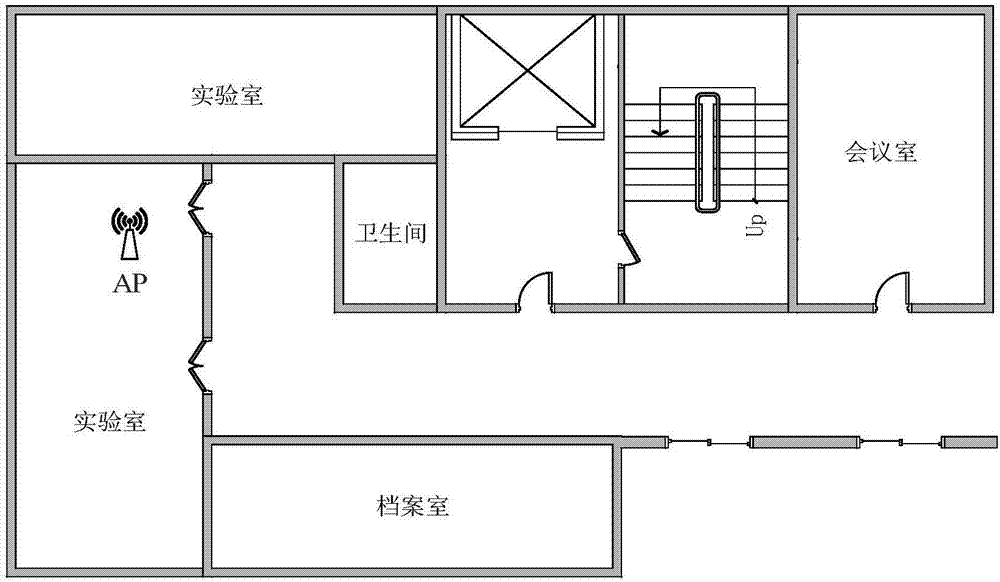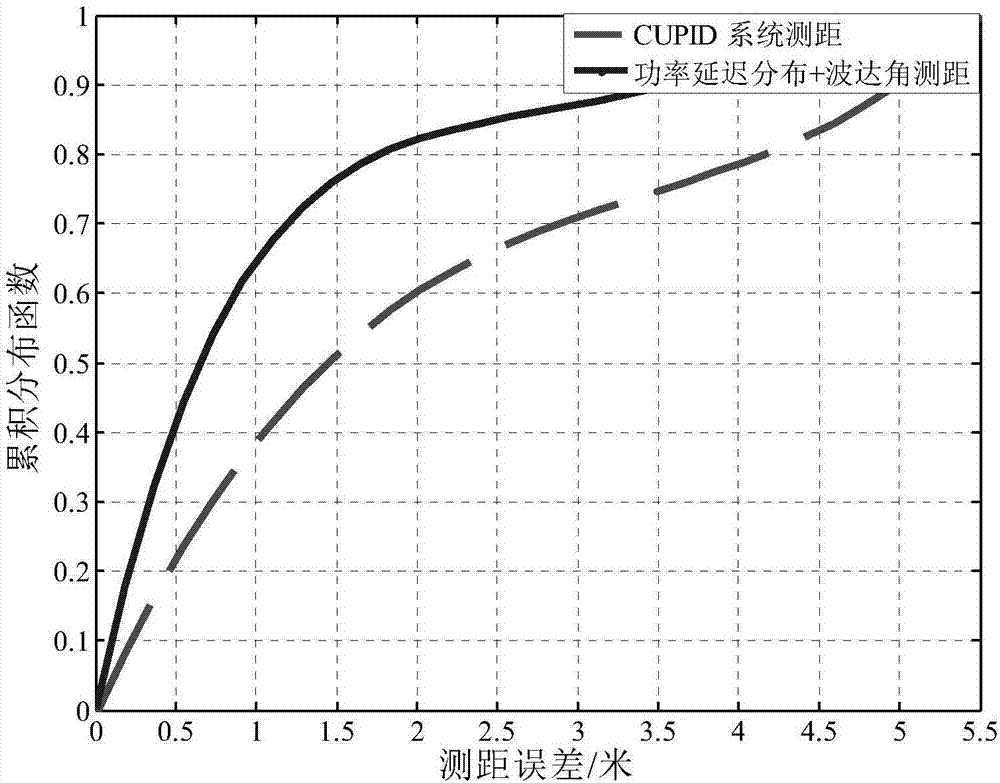Single-node indoor positioning method based on power delay profile and direction of arrival distance measurement
A power delay distribution, indoor positioning technology, applied in positioning, radio wave measurement system, measurement device and other directions, can solve the problems of large positioning error of single node, consumption of large material and financial resources, positioning accuracy, etc., to achieve high positioning accuracy and saving. Human and material resources, the effect of reducing positioning error
- Summary
- Abstract
- Description
- Claims
- Application Information
AI Technical Summary
Problems solved by technology
Method used
Image
Examples
specific Embodiment approach 1
[0023] Specific implementation mode 1: The specific process of a single-node indoor positioning method based on power delay distribution and angle-of-arrival ranging in this implementation mode is as follows:
[0024] For wireless devices that support the IEEE 802.11n protocol, when the receiver receives the data packet, it will process the data packet and generate some data information to store in the data, including received signal strength, channel noise, and channel state information.
[0025] In the past, indoor positioning systems often used received signal strength (RSS) for positioning, but signal strength information is easily affected by multipath effects, and each data packet can only carry one signal strength. For this, the present invention uses channel state information as a data source to analyze the position of the point to be located.
[0026] Before introducing the positioning method, the composition of channel state information and phase error is introduced....
specific Embodiment approach 2
[0039] Specific embodiment two: the difference between this embodiment and specific embodiment one is: the phase information and the amplitude information in the channel state information of the indoor positioning system receiver are obtained in the step two; the specific process is:
[0040] The channel state information is obtained from the data packet of the indoor positioning system receiver through the toolkit CSITOOLS. The channel state information is the channel frequency response, and the channel frequency response formula is:
[0041]
[0042] In the formula, H(f k ) for frequency f k channel frequency response, ||H(f k )||is the amplitude fading of the channel, θ k is the frequency f k The phase information of the corresponding real channel state information, j is an imaginary number, j 2 =-1;
[0043] The channel frequency response is a set of complex number arrays with a dimension of 30×A, and the value is a positive integer; solve the angle information of ...
specific Embodiment approach 3
[0046] Embodiment 3: The difference between this embodiment and Embodiment 1 or 2 is that in the step 3, an interpolation method is used to eliminate the error of the phase information obtained in the channel state information; the specific process is:
[0047] The phase information φ in the channel state information of the indoor positioning system receiver k and carrier frequency f k The phase information θ of the corresponding real channel state information k The relationship between is expressed as
[0048] φ k = θ k -2πK k f k δ+β+Z
[0049] In the formula, K kIndicates the dimension of the subcarrier, in this example -28,-26,...,-2,-1,1,3,5,...,27,28; 1≤k≤N, N is the wifi device The number of subcarriers that can be collected, the subscript k is the serial number from 1 to 30, β is the equivalent phase deviation of the indoor positioning system receiver, and δ is the sampling frequency deviation of the receiver and the received data packet detection delay deviati...
PUM
 Login to View More
Login to View More Abstract
Description
Claims
Application Information
 Login to View More
Login to View More - R&D
- Intellectual Property
- Life Sciences
- Materials
- Tech Scout
- Unparalleled Data Quality
- Higher Quality Content
- 60% Fewer Hallucinations
Browse by: Latest US Patents, China's latest patents, Technical Efficacy Thesaurus, Application Domain, Technology Topic, Popular Technical Reports.
© 2025 PatSnap. All rights reserved.Legal|Privacy policy|Modern Slavery Act Transparency Statement|Sitemap|About US| Contact US: help@patsnap.com



